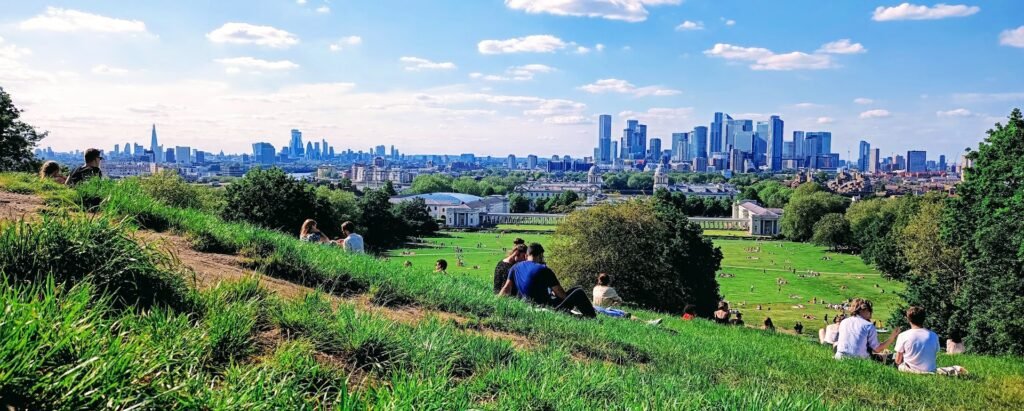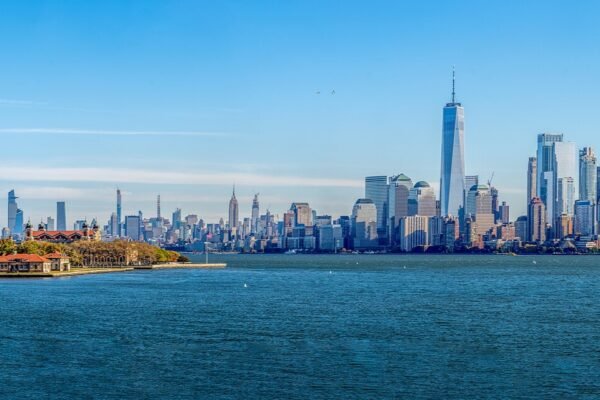A Guide to Eco-Friendly, Sustainable London

Amid growing awareness of climate change, sustainable tourism is more important than ever. London, perhaps surprisingly, leads the way as Europe’s greenest city, with nearly half of its area dedicated to green space.
This guide will help you implement eco-friendly tourism practices during your visit. We will also highlight the city’s proactive measures in sustainable transportation, development, and policy. Our goal is to empower you to make responsible choices that benefit both the planet and your travel experience.
Eco-Friendly Tourism Practices for Visitors
Your eco-friendly trip to London begins with mindful planning. Before you even book, consider assessing your carbon footprint. You can use online carbon calculators for flights. When possible, opt for direct flights, which are more fuel efficient, or choose train routes, a significantly lower carbon option for traveling from nearby locations.
Sustainable Transportation
Once you arrive, use London’s excellent public transport. The extensive tube, bus, and overground networks are the most efficient ways to navigate the city. Using an Oyster card or a contactless payment method is simple and significantly reduces emissions compared to using taxis or rideshare services for every trip.
For zero-emission travel, explore London on foot or by bicycle. Walking is the best way to discover hidden neighborhoods. You can also rent bikes from the city’s popular Santander Cycles scheme. Many navigation apps now allow you to map eco-routes that take you through London’s beautiful parks, helping you avoid congested and polluted areas.
Accommodations, Dining, and Sightseeing
When booking your stay, look for certified eco-friendly accommodations. Many hotels and hostels in London prioritize energy efficiency, water conservation, and waste reduction. To verify their claims, check for recognized certifications like Green Key or EarthCheck.
You can also practice sustainability in your dining and shopping. Choose eateries that source local and seasonal ingredients. This supports area farmers and reduces food miles. Always carry reusable items like a water bottle and coffee cup to avoid single-use plastics. Look for public water refill stations available throughout the city.
Practice responsible sightseeing by visiting popular attractions during off-peak hours to help ease overcrowding. You can also participate in guided eco-tours, such as those exploring green spaces like Hyde Park. When walking in natural areas like the Thames Path, always respect the local wildlife by keeping your distance and not leaving litter.
Some travelers worry that green options have higher upfront costs. While this can sometimes be true, these choices often lead to long-term savings. More importantly, they provide significant personal rewards, such as the enhanced wellbeing that comes from immersing yourself in nature and traveling with intention.
These individual actions are powerful, and they become even more effective when aligned with broader community efforts. This leads us to the larger strategies London is implementing to support sustainable urban living.
London’s Eco-Friendly Measures and Policies
London has made a significant public commitment to sustainability. This is detailed in the London Environment Strategy, which sets an ambitious goal for the city to be zero-carbon by 2050. This plan integrates sustainable development across all sectors.
Transport and Infrastructure
Sustainable transportation initiatives are central to this strategy. The most prominent is the Ultra Low Emission Zone (ULEZ). This policy charges most vehicles that do not meet specific emission standards to enter central London, which directly improves air quality. Alongside the ULEZ, the city is aggressively pushing for zero-emission buses and taxis, transforming its iconic public transport fleet.
The city is also investing heavily in electric vehicle infrastructure. Thousands of charging points are being installed, and incentives are offered for greener commercial fleets. These measures make it easier for visitors and residents to choose low-impact travel options.
Green Spaces and Adaptation
London is also focusing on green infrastructure and eco-friendly tourist policies. The city aims to expand its green spaces to cover over 50 percent of its area by 2050. Its status as the world’s first National Park City protects biodiversity. Furthermore, London promotes circular economy practices, including ambitious waste reduction targets.
To prepare for a changing climate, London is implementing adaptation measures. These include enhanced flood defenses along the Thames and heat mitigation strategies that use urban greening to cool the city. These steps enhance resilience for both residents and tourists.
These efforts help counter common misconceptions. While many view London as overly polluted, data shows measurable improvements in air quality, such as significant reductions in nitrogen dioxide (NO₂) levels since the ULEZ was introduced. The city also addresses seasonal overtourism by promoting off-peak incentives to distribute visitor impact.
On a national level, the UK’s Tourism Recovery Plan emphasizes a sustainable recovery post-pandemic. This includes green funds for nature-based attractions and promotions for rail travel to encourage low-carbon domestic trips.
Together, these policies create a supportive framework for visitors. They foster a cycle of mutual benefit where tourism revenue can be reinvested to fund further eco-innovations.
Conclusion
Adopting eco-friendly tourism practices in London offers numerous benefits. You gain personal fulfillment from contributing to planetary health, and you get to enjoy a cleaner, more vibrant city supported by measures like the ULEZ and expanding green spaces. Your sustainable choices have ripple effects that can inspire global change.
We encourage you to plan your next trip with intention. Perhaps you can start with a bike ride through Regent’s Park to experience London as a true model of urban harmony with nature!
Further Readings & Resources
The following sources and links are accurate as of the publication date of this article.
- London Environment Strategy: https://www.london.gov.uk/sites/default/files/london_environment_strategy_0.pdf
- Green Transport in London: https://www.london.gov.uk/programmes-strategies/transport/green-transport
- UK Tourism Recovery Plan: https://assets.publishing.service.gov.uk/media/60c239a8e90e074397d8c8b0/Tourism_Recovery_Plan__Web_Accessible_.pdf
You may also like
Archives
Calendar
| M | T | W | T | F | S | S |
|---|---|---|---|---|---|---|
| 1 | 2 | 3 | 4 | 5 | 6 | 7 |
| 8 | 9 | 10 | 11 | 12 | 13 | 14 |
| 15 | 16 | 17 | 18 | 19 | 20 | 21 |
| 22 | 23 | 24 | 25 | 26 | 27 | 28 |
| 29 | 30 | |||||



Leave a Reply